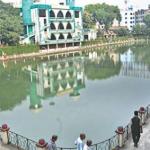Nestled in the northeastern part of Bangladesh, Sylhet is a region of captivating natural beauty, rich history, and remarkable economic importance. With its lush green landscapes, rolling hills, and diverse cultural heritage, Sylhet has earned its place as one of the most picturesque and economically vital regions in the country. In this article, we will delve into the intriguing past of Sylhet, explore its changing names and the reasons behind them, examine its booming economy, and highlight its environmental significance.
Table of contents [Show]
Historical Evolution and Changing Names of Sylhet:
Sylhet, often referred to as "Silhat" in historical texts, has a rich history that dates back centuries. In the past, Sylhet was known by various names such as "Srihatta" and "Silhatta." These names reflect the region's ancient connections with both Hindu and Buddhist civilizations. However, as history unfolded, Sylhet's identity evolved, and it eventually adopted the name we recognize today.

During the British colonial period, the name "Sylhet" was standardized, primarily due to administrative reasons and to establish a clear identity for the region. The name has its roots in the Bengali language and signifies the area's natural landscape, which is characterized by hills, rivers, and abundant greenery.
Economic Backbone of Sylhet:
Sylhet's economy rests on multiple pillars, with its most prominent sectors being agriculture, trade, and remittances from overseas Bangladeshi communities. The region's fertile plains and favorable climate contribute to its agricultural strength, producing a variety of crops including tea, rice, and oranges. Sylheti tea, renowned for its unique flavor and aroma, has gained international recognition and contributes significantly to the national tea industry.
Moreover, Sylhet has emerged as a hub for trade and commerce, with its strategic location facilitating connectivity with neighboring countries like India and Myanmar. The region's trade centers, such as the bustling Sylhet City, have witnessed steady growth, fostering economic opportunities for residents.

Sylhet's Role in the Bangladeshi Economy:
Sylhet's importance transcends its regional boundaries, playing a pivotal role in Bangladesh's overall economy. The region's contributions to the nation's GDP, primarily through the tea industry, agriculture, and remittances, cannot be overstated. The remittances from Sylheti expatriates, particularly in the United Kingdom and the Middle East, constitute a significant portion of the country's foreign exchange earnings.
Furthermore, Sylhet's tea plantations generate revenue and employment opportunities on a large scale. The tea industry not only generates income for the local population but also contributes to the country's export earnings, enhancing its economic stability.
Environmental Significance and Beyond:
Sylhet's natural beauty extends beyond its economic contributions. The region boasts diverse flora and fauna, making it an ecological hotspot within Bangladesh. The Ratargul Swamp Forest, a unique freshwater swamp forest located in Gowainghat Upazila, is a prime example of Sylhet's environmental significance. This forest, with its submerged trees and rich biodiversity, showcases the region's commitment to preserving its natural heritage.

However, Sylhet's environment faces challenges like deforestation, urbanization, and environmental degradation. Conservation efforts, both by the local government and non-governmental organizations, are essential to maintaining the ecological balance that sustains Sylhet's captivating landscapes.
Conclusion:
Sylhet, with its captivating history, diverse culture, and economic vitality, stands as a testament to the rich tapestry of Bangladesh. From its changing names through the centuries to its pivotal role in the national economy, Sylhet's journey is a blend of tradition, progress, and natural beauty. As the region continues to evolve, it is crucial to balance economic growth with environmental preservation, ensuring that Sylhet remains a gem that shines brightly on the map of Bangladesh.








